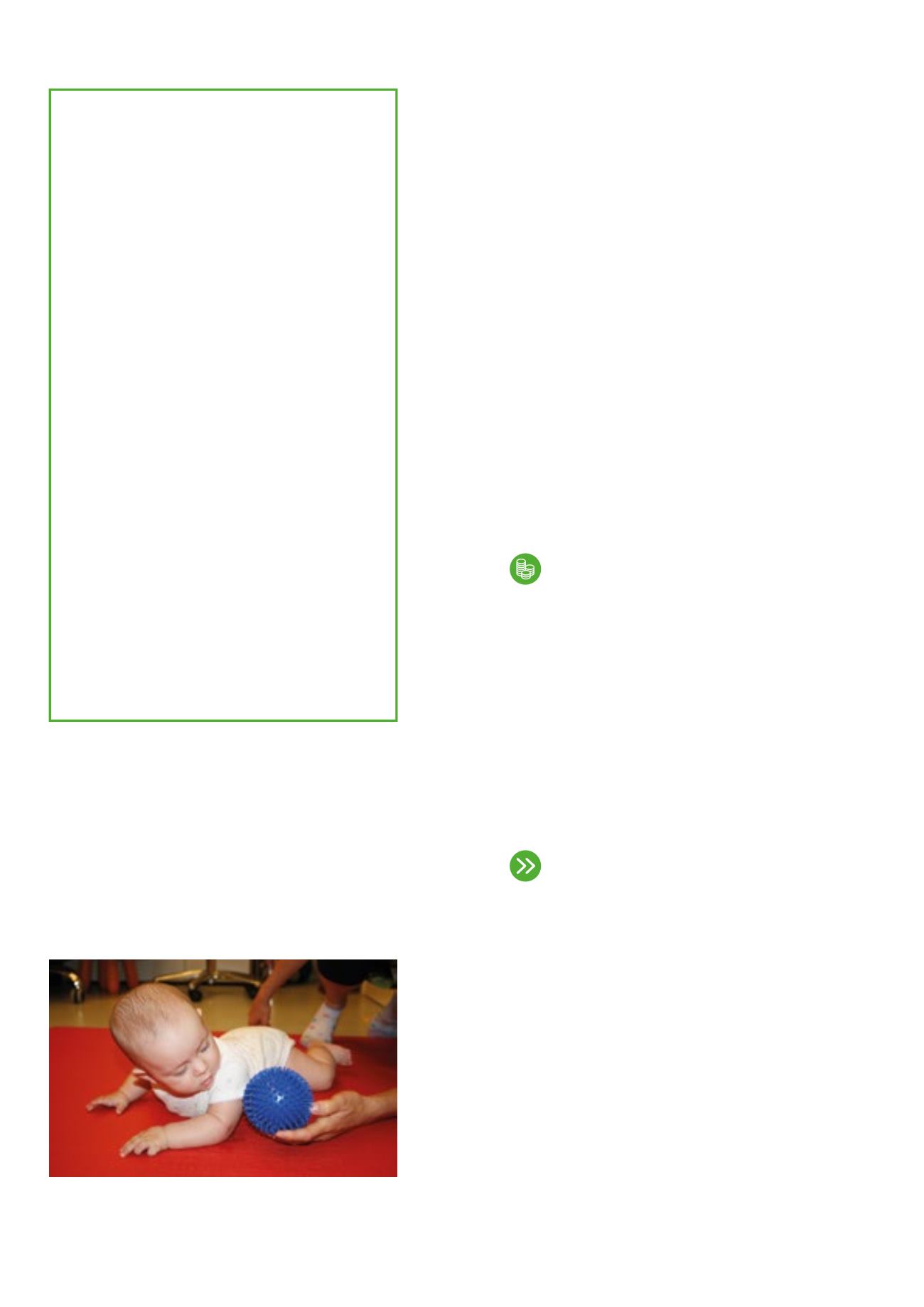

34
Learning materials include non-standardized didactic
materials, such as shoe-box activity for sorting and
matching, beads or small balls for visual stimulation,
and visual calendars. The therapists also select play
materials suited to their intervention strategies. These
include many different objects – some already in the
family home and some brought by the therapists –
such as toys, games, instructional materials, everyday
objects, and construction pieces.
These services are performed at the child’s home
primary by a therapist/service provider, who is a key
member of the Early Intervention Team. Home-based
practice includes regular visits (once a week) from
a special teacher who works with the child and the
family according to the IFSP, having first defined
outcomes and short and long-term goals with all team
members and the family.
Centre-based activities are provided when there is
the need for professional support from some other
specific field or when services cannot be carried
out at home, such as physical/occupational therapy,
sensory integration, swimming, psychologist consul-
tations, and parent groups and experience groups
(parents with children). In all those activities parents
are present, and all are carried out in coordination
with the key staff person and all other team members.
FUNDING:
Public funding is available
The practice is funded by the local government.
Moreover, there is an agreement with the Ministry
of Social Welfare for providing listed services. The
actual budget is calculated per service: for example,
home visit once a week, physiotherapist once a week,
moderated experience group meetings once every
two weeks, etc. Parents agree upon this plan, and it is
re-evaluated – together with the child’s development
and the IEP – every three to six months and changed
accordingly, if required.
OUTLOOK:
No common standard for early
intervention programmes yet
Mali Dom observes that there is still not adequate
cooperation among the various stakeholders when
it comes to the transition from early intervention
services to other services, such as kindergarten and
schools. The process functions only by an initiative
of the organization, since there is as yet no legislative
solution or standardized protocol.
In order to expand particular programmes, the
organization needs a larger budget to employ more
professionals. Another obstacle to overcome is for
the Ministry in charge to standardize this method-
ology and ensure the service quality of other early
intervention service providers. Currently, the Ministry
only provides recommendations.
FACTS AND FIGURES:
180 children treated over
three years
The following services are offered:
• Transdisciplinary assessment of each child,
involving 2–3 professionals and 1–2 family
members (usually both parents).
• Home visits by a dedicated professional
who works with the individual child and
family members.
• Extra support at the Mali Dom centre when
needed, such as sensory integration, phys-
iotherapy, swimming, vibro-acustic therapy,
etc., with at least one family member pres-
ent (usually a parent).
• “Experience groups” composed of 4–5 chil-
dren, at least one family member per child
(usually a parent), and 4–5 professionals.
• Altogether, the organization has 26 teaching
staff members.
• Over the last three years 180 children and
320 parents participated in regular early
intervention programmes, and 450 children
benefitted from transdisciplinary assess-
ment and counselling.
Therapy session can be performed with household items
and everyday playtools


















